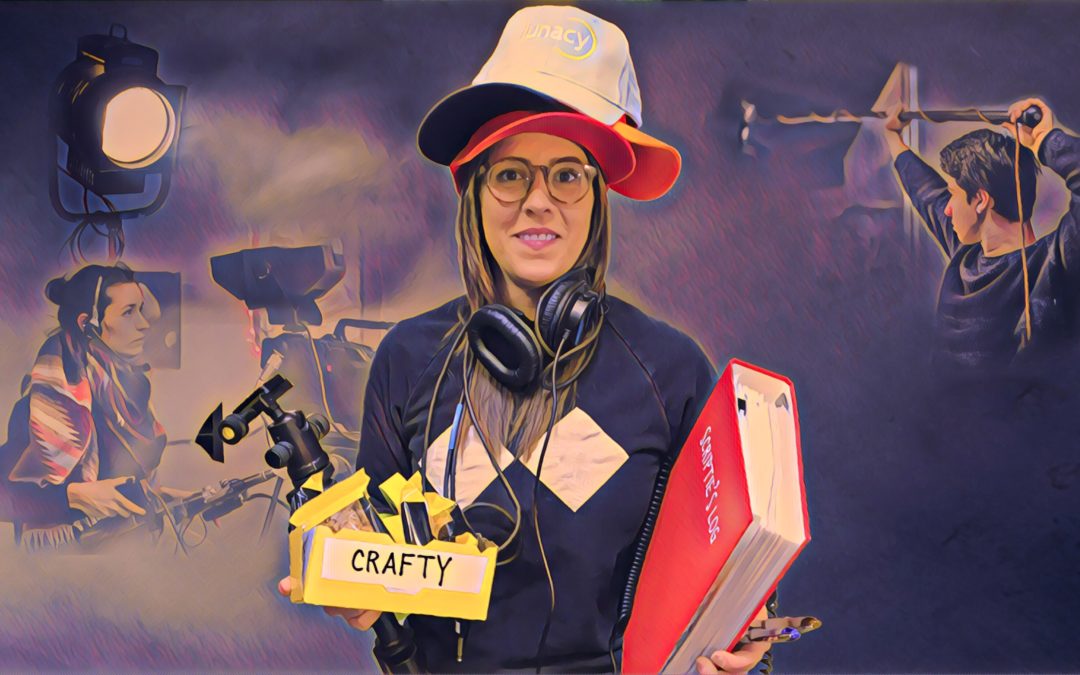Those figures notwithstanding, keeping costs low can set you up to turn a profit, and thus attract distribution. You will need some money, and in today’s economy, any budget under a million dollars is considered low. But the lower you go, the more you will depend on the intangibles — like time, good industry relationships, tenacity… and luck!
If you have a strong vision and the drive to make a good film, we want to help you succeed at that. So here are five ways to keep costs as low as you plan for your first feature.
1. Clarify your vision
A strong “why” is essential for any filmmaker, but possibly even more so for creators making magic out of talent, determination, and not much else. If your vision is clear — the spark that lit your imagination on fire — it will guide you when it comes to incorporating feedback.
Ideas will abound, especially as you bring your team together and start planning the shoot. Everyone gets excited and wants to contribute what are potentially really cool suggestions — a crane shot here, an upgraded set piece there. It might be fabulous, and it might be frivolous.
It’s easy to get caught up in all these suggestions and lose perspective, but if your motives are clear to both you and your collaborators, you will know what to prioritize. It’s not about what you’re saying no to, but what you’re creating space for.
2. Keep the schedule short
We’re talking 12 days, 7 days, even 6 days. Such a lean timeline demands a tight production with a script and a shooting style designed for speed and agility. Limited setups, simple lighting, and single locations do a lot to stretch your shooting days.
The math checks out: the fewer days you need to pay people, the less it will cost. But this is not about cramming 20 days of filming into 10 — that sounds like hell! For help with building a realistic production schedule to fit your budget, revisit our 5 tips for efficient scheduling.
“On set when staff clashes or crashes, things go missing, abrupt change occurs, or planned setups and scenarios won’t work… everyone looks to the most senior producer for an immediate solution. Simple tricks like padding time are lifesavers, as well as vital/timely communication with HOD’s, cast/crew — informally and formally.”
Anne Grauso (Exit Zero, Pocket)
3. Wear multiple hats
Plenty of indie producers are creating opportunities for themselves as actors, directors, writers, and cinematographers. Depending on the size of your production, you may need to double up on your roles as well.
There are myriad examples of this in our film Rust Creek. For instance, producer Alex Jensen was also our post-production supervisor, graphic artist, and voice actor.
On micro-budget films, the producing team doesn’t get paid (not at first, anyway), and everyone is non-union. They might not even have a designated AD or script supervisor, so some flexibility of roles and responsibilities will be in order.
That said, all positions on a film set are important, and there is a reason they exist. Wearing too many hats, or cutting roles altogether, can easily backfire. Keep that in mind during the planning process, and find ways to compensate.
4. Give the kid a chance
The crew that will work for cheap is often inexperienced. We say often, but not always — it’s surprising what one can find fresh out of film school or cruising through CraigsList. You do have a lot going for you: after all, you are offering young filmmakers the opportunity to work on a feature, take on more responsibility, and collaborate with other up-and-coming talents in the industry.
When it comes to department heads, be more cautious. After all, these are the people who will help carry your vision and lead the crew. Leverage their interest in your project or their desire to switch disciplines — say from reality TV to narrative film. But for the majority of your crew, hands-on experience might come second to willingness to work.
My last three movies were shot in 12 days, so I shoot with two cameras. What I love is my B camera people often are really talented cinematographers who haven’t had an opportunity yet. So you send them off on assignment, and you see the footage later, and you’re like, ‘Oh my god, they’re genius. They’re genius.’”
Tamar Halpern (Killer Vacation, My Husband’s Secret Wife)
5. Plan, plan, plan
Whenever possible, use your own time and elbow grease to make the best use of everyone else’s. Planning is free, and it can help you anticipate decisions that might otherwise be made on set, either with a storyboard or a location scout to check outlets, accessibility, and composition. All the stuff you might not think to check, if it falls outside your area of expertise.
Rehearsing your actors can also be a huge help to a short production schedule. For Plus One, the entire production day was planned around the long takes that had to be choreographed and rehearsed with the cast and camera.
“We would move around the shooting schedule for the day, so that it would be very rehearsal-heavy up front. The last two to two-and-a-half hours of the day were going to be the time when we needed to get everything on camera. But a lot of it was setting up and logistical coordination.”
Andrew Rhymer (Plus One)


Strengthpro@gmail.com
We are in the process of creating two feature films.